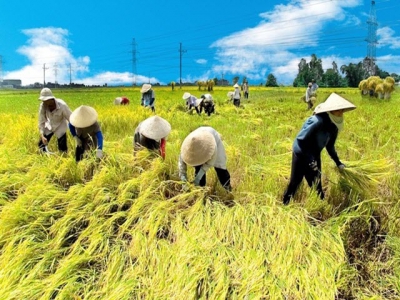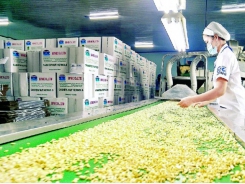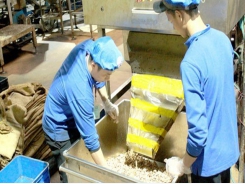Vietnams rice exports in spotlight despite decrease in acrerage

In February, Vietnam's rice exports increased by 32.6 per cent compared to the same time last year, despite troubles from the COVID-19 epidemic and natural catastrophes.
Despite the reduction of acreage, the yield of rice exports has been increased
According to a report from the Ministry of Agriculture and Rural Development in February, Vietnam's rice exports reached 890,000 tonnes in February, up 27 per cent against 2019. This resulted in an export revenue of $410 million, up 32.6 per cent compared to the corresponding period last year. This is positive, despite the export revenue of other agricultural produce such as fish, cashew, pepper, and other vegetables experienced a marked drop.
The export price of rice ranks second-highest among rice exporting countries, only behind that in Thailand. For example, the price of 5 per cent broken rice of Vietnam is around $380 per tonne, a 10 per cent increase compared to the $345 at the end of January. This is a peak price since 2019. Generally, the export price of rice ascended steeply by $40 per tonne and accounted for 10 per cent of total exports in 2019.
It is believed that the surge in the export price of rice in February is due to major imports from the Philippines. This country has bought rice from Vietnam to meet the consumption demand because of reduction of agricultural land and growing population.
Up to now, the two largest export markets for Vietnamese rice were the Philippines and Malaysia. In 2019, the top five rice export markets for Vietnam were the Philippines, Côte d'Ivoire, China, Malaysia, and Ghana.
According to Do Ha Nam, chairman of the Vietnam Food Association, domestic rice exports were not affected much by the COVID-19 because Vietnam has discovered new markets to ensure stability.
Despite the rise in export revenue, Vietnamese rice farmers have had to deal with natural catastrophes like prolonged rains, hail, and sleet in the north, as well as droughts and saline intrusion in the Mekong Delta region.
During the early harvest, according to statistics from the General Statistics Office of Vietnam, rice was cultivated on a total area of 2.67 million hectares, accounting for 98.3 per cent of last year. Precisely, that numbers in the north and the south were over 760,000 and more than 1.9 million ha, respectively, accounting for 103.6 and 96.3 per cent of the figures from last year.
In particular, the Mekong Delta contributes about 1.54 million ha, which is 3.3 per cent less than last year. In the north, especially in the Mekong Delta, the cultivation area declined by 53,400ha compared to the same time last year.
Generally, the Mekong Delta, the Central Highlands, and the southern provinces have ended the early rice harvest season with bumper crops. The harvest in the north was also better than last year.
Có thể bạn quan tâm
Phần mềm

Phối trộn thức ăn chăn nuôi

Pha dung dịch thủy canh

Định mức cho tôm ăn

Phối trộn phân bón NPK

Xác định tỷ lệ tôm sống

Chuyển đổi đơn vị phân bón

Xác định công suất sục khí

Chuyển đổi đơn vị tôm

Tính diện tích nhà kính

Tính thể tích ao hồ



 BASF's focused approach boosts agricultural innovation by 25…
BASF's focused approach boosts agricultural innovation by 25…  Viet Nam cashew market hard to forecast due…
Viet Nam cashew market hard to forecast due…